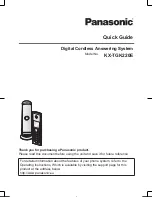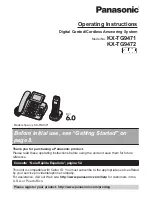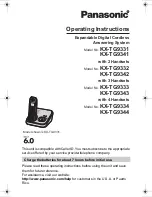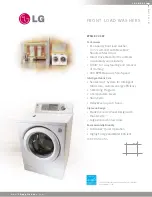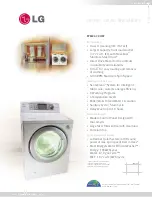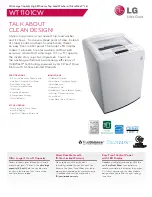
Glossary
187
Appe
ndix
G3 mode (Group 3)
Refers to the standards and transmission capabilities of the current generation of facsimile
machines.
Group dialing
The ability to program many telephone numbers into a single station so that many locations
can be dialed in sequence utilizing a single keystroke.
HALFTONE
A scanning technique to distinguish levels of gray from black and white. Your machine can
detect up to 64 levels of gray in halftone mode.
Handshaking
The exchange of a group of control signals that communicate between the transmitter and
receiver. These signals determine the condition at which communication can occur.
Header
A row of information that is transmitted by the sending machine and printed at the top of each
page by the receiving unit. This identifies the transmitting unit and information about the
transmission, such as time and date.
ITU-T
International Telecommunication Union - Telecommunication, formerly known as C.C.I.T.T.
ITU-T Image No.1
An industry standard document that allows comparisons of the transmission speeds and
capabilities of facsimile machines.
ID
A programmable address of up to 20 digits identifying your machine.
Image memory capacity
This signifies the amount of memory available in your unit capable of storing pages of
documents. All page units of measure are based on the ITU-T Image No.1.
Individual Transmission
Journal
A report that is printed by the transmitting unit stating information regarding the last document
transaction.
Information code
A code that is internally generated by your Fax stating a specific operational error or machine
failure.
Initial sending station
In a relay network, the station that is originating the document transmission.
Journal
A report that is printed by your unit listing the last 32 transactions.
Keypad
A group of numeric keys located on your control panel. The keys that are used to enter letters
and symbols for various programming functions.
LCD
Liquid Crystal Display. The display area of your machine.
LOGO
Your programmed company name or identification up to 25 alphanumeric characters.
Multiple Logo
The user can select one of 25 preset LOGOs before a transmission.
Manual reception
A mode that requires operator intervention to receive an incoming document.
Memory transmission
The documents are scanned into memory before actual connection to the phone line for
transmission.
Modem
A device that converts signals from your fax machine into signals that can be transmitted
over telephone lines.
Multi-station
transmission
The ability to broadcast the same set of documents to a programmed number of locations.
One-Touch dialing
The ability to dial an entire telephone number by pressing one key.
Polling
The ability to retrieve a document from another facsimile machine.
Polling password
A 4-digit programmed code that enables the security of a document being polled.
Print reduction modes
The methods used to determine how an incoming document will be reduced to print onto the
paper loaded in your machine.
Protocol
A protocol is the special set of rules for communicating used by the end points in a
telecommunication connection when they send signals back and forth. Both end points must
recognize and observe the protocol.
PSTN
Public Switched Telephone Network. Network of interconnected switching equipment and
transmission facilities.
Receiving password
A 4-digit password that is checked before a document is received.
RESOLUTION
Relates to the number of dots scanned or printed per certain square. The quality of the
image increases as the number of dots per certain square increases.
Continued on the next page...





























